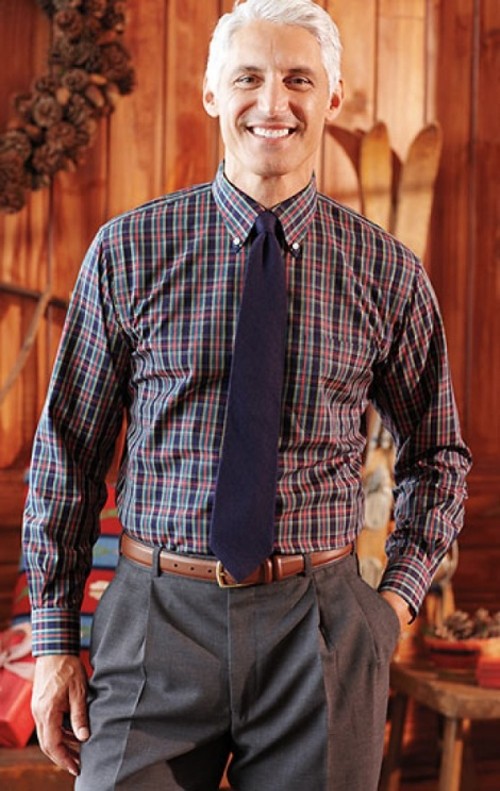When I was in college, each of the four seasons had its own poems. For E.E Cummings, spring was “puddle wonderful,” and William Wordsworth celebrated daffodils. Fall, according to William Blake, was “the lusty song of fruit and flowers.” Robert Frost dallied in a dark forest to watch it fill up with downy snowflakes. William Shakespeare used the changing seasons as a metaphor for love and life.
When I was a gardener, each of the four seasons had its own imperatives. They were enumerated and explained in the annual edition the Old Farmer’s Almanac. The book gave planting advice, recipes and long-range weather forecasts. I started seeds in March, planted peas in April, shared the corn crop with raccoons at the end of summer and dug brussel sprouts out of the snow to sauté in butter.
Now, these many years later, I sense that the seasons have been co-opted by the fashion industry. In the process, spring and fall have been marginalized while summer and winter have gained stature as retail opportunities. Nowhere is that more evident than in our mailboxes overflowing with catalogs in the months before and after Christmas. The Hammacher Schlemmer “holiday preview” catalog arrives in August, and by mid-December, Lands’ End and L.L. Bean will have flooded the country with enough glossy pages to clog the municipal waste stream of a city the size of Ogden.
I was still wearing Keds when I discovered the L.L. Bean catalog. I read it closely. A narrative thread ran through its product descriptions. What did Leon Bean wear to keep his feet dry while hunting in the Maine woods? My first purchase was a “silent dog whistle.” I paid cash, taping rows of quarters to a 3-by-5-inch recipe card and mailing it to L.L. Bean in Freeport, Maine. I eventually rounded out a wardrobe in “Bean outdoor chic” by mailing written orders and personal checks for chamois shirts, wide-wale corduroy pants, turtlenecks, Topsiders and, of course, the Maine Hunting Shoes invented by old Bean himself in 1912. As outdoor chic fell out of favor as office attire, I found Lands’ End and used a Visa card to order from its classic line—button-downs, bowties, V-neck sweaters and khaki pants.
So, I am no stranger to catalogs, but I have come to resent them. The marketing forces behind their slick pages are distorting the natural order of things. Spring is not so much a time to play hopscotch, fly kites or plant peas as it is an interlude of toning up for swimsuit season. Fall is now the province of the TV meteorologist and Santa Claus. The former broadcasts photos of colorful leaves; the latter hawks video games to keep kids indoors—away from the trees—and flabby. Gone are the days when Thanksgiving was a harvest festival. It is now the biggest shopping event of the year. In preparation, Macy’s had Christmas trees in place before Labor Day.
Come Black Friday this year, however, the composition of the mall crowd will be different than it used to be. Research shows men now make more shopping trips in a week than do women. It follows, then, that whatever fashion sense we men might have is subject to the same seasonal marketing forces that produce the catalogs. I resent it, too. I don’t think of myself as being easily influenced, let alone manipulated. Instead, I see a rugged individualist in the mirror. He is usually dressed in Levis and a T-shirt. But if he plans to wear a polo shirt to a party, he should wear the collar turned up. Thus sayeth Ralph Lauren.
You would have thought the Internet would have killed off catalogs the way it has strangled newspapers. But the big retailers are proving to be resilient, using the Internet and niche marketing to advantage. Abercrombie and Fitch has resurrected its A&F Quarterly, which was reviled as “soft porn” a few years ago. The company is evidently hoping to build on the success of the controversial editions that boosted the A&F brand as the standard for young-adult fashion. Similarly, the new Fossil catalog is designed to have the look and feel of a teen magazine. Ralph Lauren has launched a “virtual storybook” as the marketing vehicle to sell stylish children’s clothing to well-heeled parents of kids between 2 and 8. A start-up company in California called Saboteur intends to be the haberdasher of choice for geeks. “You are a man, dress like one” is the company slogan. What does the well-dressed man-geek wear on a date? A shirt with French cuffs ($125) and a $350 black blazer with purple pinstripes.
No pricey blazers for me! No catalogs, either. My resentment keeps them at arm’s length. In those rare instances where I do place an order, I buy winter stuff in the spring and summer stuff in the fall. I am embarrassed to acknowledge that, in so doing, I fall in step with those who flaunt the natural order for the sake of money.
Speaking of Editorial
-
Mail Time
Traveling Exhibit From The Smithsonian's National Postal Museum
- Jun 26, 2013
-
Lucky Strikes
Random twists of fate and kindness
- Feb 20, 2013
-
Soundtrack to a Life
What songs define the important moments?
- May 30, 2012
- More »
More by John Rasmuson
-
Books are hip for both decorating and political grandstanding, but they're even better if you read them.
Opinion
- Feb 21, 2024
-
Rizz up your grammar with 2023's 'words of the year'
Opinion
- Dec 27, 2023
-
Lace up your shoes—whatever the brand—and seize the day
Opinion
- Aug 16, 2023
- More »
Latest in Opinion
Readers also liked…
-
Russian Army Conscripts Asking, 'Where's Our Underwear?'
Smart Bomb: The completely unnecessary news analysis.
- Dec 21, 2022




